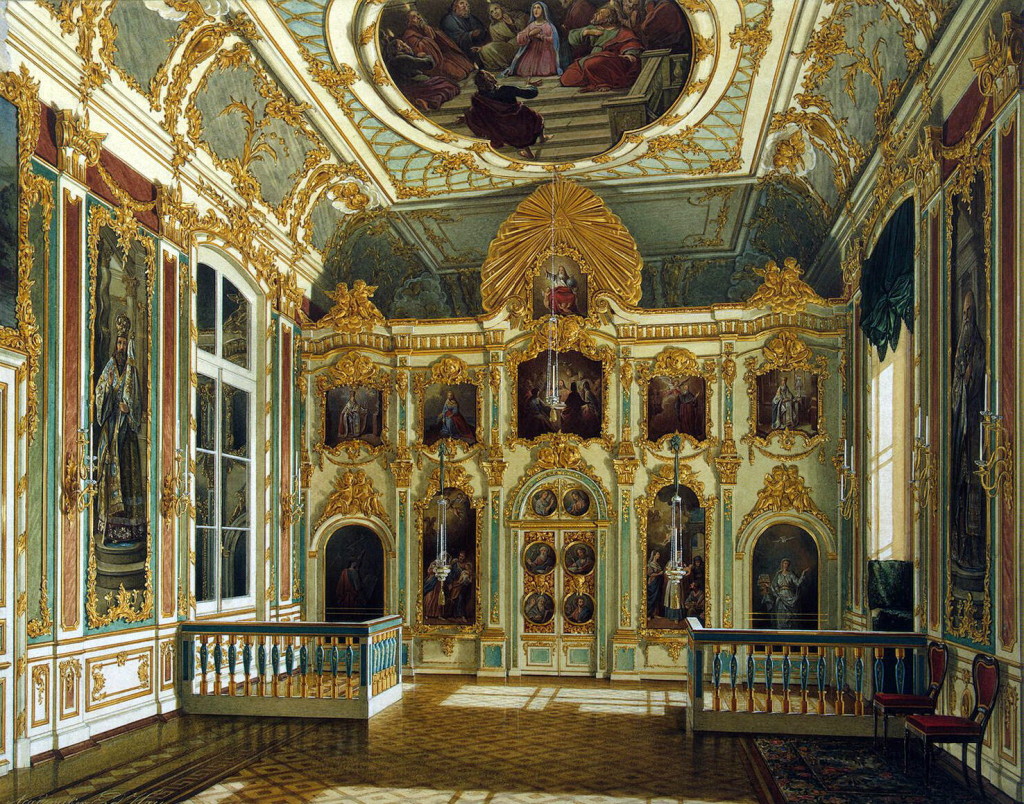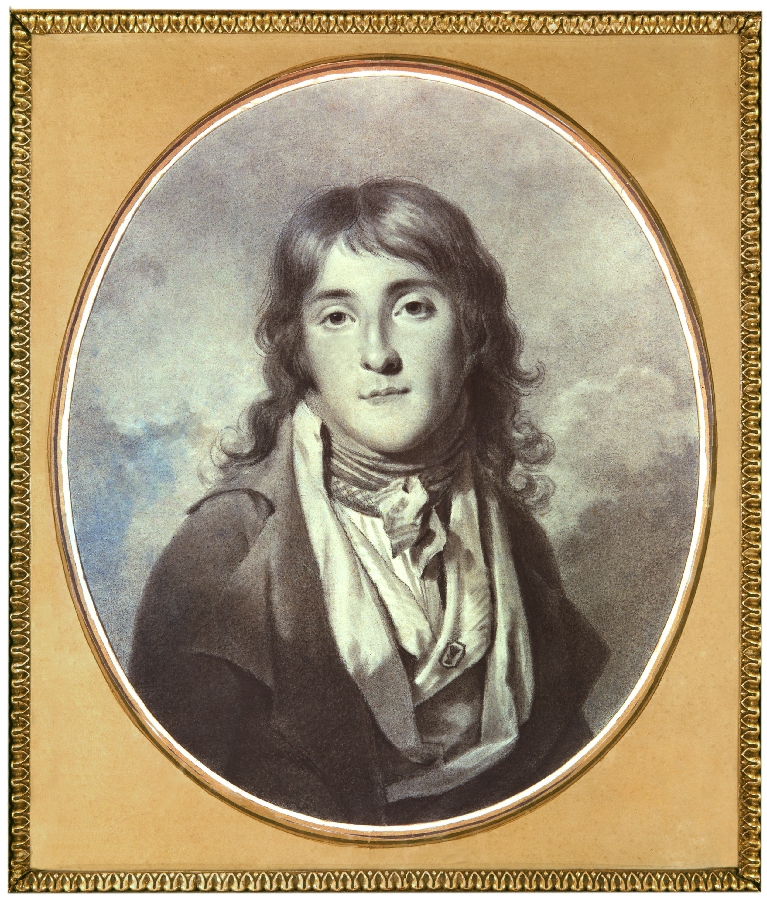© Unofficial Royalty 2022

Peter I (the Great), Emperor of All Russia; Credit – Wikipedia
June 9, 1661 – Birth of Feodor III, Tsar of All Russia in Moscow, Russia
When Feodor’s father Alexei I, Tsar of All Russia died in 1676, he was succeeded by 15-year-old Feodor. Even though Feodor had been well educated and had a fine intellect, he had a debilitating physical condition that prevented him from really reigning. In 1682, at the age of 20, Feodor died childless and without making an order concerning the succession to the throne. This was eventually resolved by the decision to have two tsars at the same time – Feodor’s brother Ivan V and his half-brother Peter I (the Great) under the regency of Sofia Alexeevna, Feodor’s eldest sister.
Unofficial Royalty: Feodor III, Tsar of All Russia
June 9, 1672 – Birth of Peter I “the Great”, Emperor of All Russia at the Moscow Kremlin in Moscow, Russia
After the death of their elder half-brother Feodor III, Tsar of All Russia, who was disabled by an unknown disease that left him disfigured and partially paralyzed, Peter and his older half-brother Ivan, who had serious physical and mental disabilities, were co-rulers of Russia. Peter married twice to Eudoxia Feodorovna Lopukhina and then to Marta Samuilovna Skavronskaya, later Catherine I, Empress of All Russia. Peter had fourteen children but only three survived to adulthood including Elizabeth, Empress of All Russia. Upon his half-brother’s death in 1696, Peter assumed complete authority. Peter is perhaps the greatest Romanov ruler. He is known for his modernization reforms and for the founding of the city of St. Petersburg. Peter was interested in seafaring and maritime affairs, and he wanted Russia to have a seaport in order to be able to trade with other maritime nations. He needed a better seaport than Arkhangelsk, which was on the White Sea to the north and closed to shipping during the winter. Previously titled Tsar of All Russia, Peter was officially proclaimed Emperor of All Russia in 1721.
Unofficial Royalty: Peter I, Emperor of All Russia (the Great)
June 9, 1701 – Death of Philippe I, Duke of Orléans, son of King Louis XIII of France and brother of King Louis XIV of France, at the Château de Saint-Cloud in France; buried at the Basilica of St. Denis near Paris
The only sibling of King Louis XIV, Philippe’s careful investment and management of his various estates made him a wealthy man but his wealth was greatly increased when he inherited the fortune of his extremely wealthy paternal first cousin Anne Marie Louise of Orléans, Duchess of Montpensier upon her death. Philippe is acknowledged as being not only the biological founder of the House of Orléans but as its financial founder. His descendants include King Felipe VI of Spain, King Philippe of the Belgians, Grand Duke Henri of Luxembourg, Henri, Count of Paris, the Orléanist pretender to the French throne and Victor Emmanuel of Savoy, the pretender to the Italian throne.
Unofficial Royalty: Philippe I, Duke of Orléans
June 9, 1806 – Birth of Ludwig III, Grand Duke of Hesse and by Rhine in Darmstadt, Grand Duchy of Hesse and by Rhine, now in Hesse, Germany
Ludwig was the brother of Prince Alexander, the founder of the Battenberg/Mountbatten dynasty and Marie who married Alexander II, Emperor of All Russia. His marriage to Mathilde Caroline of Bavaria was childless and so he was succeeded by his nephew Ludwig IV who married Queen Victoria’s daughter Alice.
Unofficial Royalty: Ludwig III, Grand Duke of Hesse and by Rhine
June 9, 1820 – Death of Wilhelmina of Prussia, Princess of Orange, wife of Willem V, Prince of Orange, at Het Loo Palace in Apeldoorn, Dutch Republic, now in the Netherlands; first buried at Het Loo Palace, reinterred in 1831 at the new crypt at Nieuwe Kerk in Delft, the Netherlands
Wilhelmina married Willem V, Prince of Orange. In 1795, her husband lost power when the Dutch Republic was threatened by invading French armies. Revolutionary Dutch patriots, now supported by the French Army, replaced the Dutch Republic with the Batavian Republic which remained in power until 1806. Wilhelmina’s family fled to England where they lived in exile until in London in the part of Kew Palace known as the Dutch House with the permission of Willem V’s first cousin King George III. In 1806, Napoleon created the Kingdom of Holland for his brother Louis and the Batavian Republic came to an end. In 1813, with the help of Alexander I, Emperor of All Russia, the House of Orange was restored and Wilhelmina’s son became Willem I, the first KIng of the Netherlands.
Unofficial Royalty: Wilhelmina of Prussia, Princess of Orange
June 9, 1923 – Death of Princess Helena of the United Kingdom, daughter of Queen Victoria of the United Kingdom, at Schomberg House, Pall Mall in London, England; buried at Royal Burial Ground at Frogmore in Windsor, England
Helena took a very active role in royal duties and engagements at a time when this was not nearly as common as it is today. In addition, she was very involved in charity work, particularly in the area of nursing. She served as president of the Royal British Nurses Association and was one of the founding members of the British Red Cross. She was also the founding president of the Royal School of Needlework. Upon her death, Helena was first interred in the Royal Crypt at St. George’s Chapel at Windsor Castle. In 1928, her remains, along with those of her husband and infant son Harald were moved to the newly established Royal Burial Ground at Frogmore in Windsor, England.
Unofficial Royalty: Princess Helena of the United Kingdom
June 9, 1930 – Birth of Princess Ragnhild of Norway, daughter of King Olav V of Norway, at the Royal Palace in Oslo, Norway
Full name: Ragnhild Alexandra
Named for another Ragnhild, the wife of Harald Fairhair, the first king of a united Norway who reigned 872 – 930, Ragnhild was the first native Norwegian princess born in Norway in over 600 years. Ragnhild married Erling Lorentzen, a commoner and her former bodyguard. Reportedly, Ragnhild’s grandfather King Haakon VII consented to the marriage only after the intervention of her mother Crown Princess Märtha. Ragnhild lost her style of Royal Highness with the marriage, becoming known instead as Her Highness Princess Ragnhild, Mrs. Lorentzen. The couple settled in Rio de Janeiro, Brazil, and had three children.
Unofficial Royalty: Princess Ragnhild of Norway
June 9, 1946 – Shooting death of King Ananda Mahidol, Rama VIII of Thailand, at the Grand Palace in Bangkok, Thailand; his ashes are enshrined in the base of the Buddha statue at Wat Suthat in Bangkok, Thailand
20-year-old King Ananda Mahidol was found shot to death in his bed in the Boromphiman Throne Hall, a residential palace located in the Grand Palace in Bangkok, Thailand. He was scheduled to return to the University of Lausanne in Switzerland four days later to begin work on his Ph.D. King Ananda Mahidol was succeeded by his 18-year-old brother Bhumibol Adulyadej who reigned for seventy years. Although three people were tried and executed for King Ananda Mahidol’s supposed assassination, the circumstances of his death have never been fully explained and his death is still seen as a mystery.
Unofficial Royalty: Assassination of Ananda Mahidol, King of Thailand (coming soon)
Unofficial Royalty: King Ananda Mahidol of Thailand
June 9, 1993 – Wedding of Emperor Naruhito of Japan and Masako Owada, married at the Kashiko-dokoro, the Shinto shrine of Amaterasu, the Sun Goddess, on the grounds of the Imperial Palace in Tokyo, Japan
Unofficial Royalty: Wedding of Emperor Naruhito of Japan and Masako Owada
This article is the intellectual property of Unofficial Royalty and is NOT TO BE COPIED, EDITED, OR POSTED IN ANY FORM ON ANOTHER WEBSITE under any circumstances. It is permissible to use a link that directs to Unofficial Royalty.






























